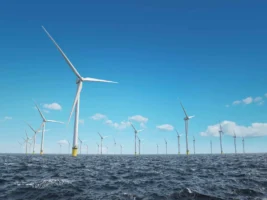Canberra-based software company Reposit Power says the best guarantee of energy security is battery storage systems installed behind the meter, in Australia’s homes and businesses, and not grid-scale applications.
Speaking at a Special Parliamentary Briefing on Energy Storage on Wednesday, Reposit director Luke Osborne said that Australia’s energy sector was rapidly decentralising, with new technology allowing consumers to be much more active in the management of the grid – while also giving energy market operators access to thousands of megawatts of back-up power capacity.
The energy storage briefing, hosted by Greens MP Adam Bandt and independent MPs Cathy McGowan and Andrew Wilkie, with support from the Australian Solar Council, was attended by a smattering of politicians, including former Nationals MP Bob Katter, and Liberal MPs Tim Wilson and Craig Kelly.
It is part of a broader industry effort to bring politicians up to speed on Australia’s rapidly changing energy landscape, as fossil fuel generators exit the market and increasing amounts of cheap renewable energy generation is brought online.
It may also be an effort to shift the policy focus away from grid-scale energy storage, after a month of ambitious state and federal policy announcements – and provocative billionaire Tweets – put big batteries and pumped hydro in the spotlight.
Two weeks ago, the South Australian government surprised the market with plans to install what would be Australia’s biggest battery storage installation, of at least 100MW, to be built through a tender process.
That announcement was followed swiftly by more surprising news, this time from the federal government, of plans to spend $2 billion on a 2GW pumped hydro scheme in the Snowy Mountains.
Reposit, meanwhile, has been busy working on a number of game-changing projects, via its pioneering solar and storage monitoring and trading system that earns consumers “grid credits” when their solar energy is sold back to the National Electricity Market (NEM) or network utilities.

It is also working on virtual power plant technology, as is California-based Sunverge, which is involved in the AGL Energy-led South Australian VPP – officially launched earlier this month – that is combining the stored solar power from 1000 homes across Adelaide to effectively create a total of 7MWh of storage capacity and 5MW peaking capacity.
Impressive, but just the tip of the iceberg, according to Reposit, which told an Energy Storage Council conference in Brisbane last week that the projected one million home and business battery systems of 2020 Australia could provide 5GW of “virtual power plant” capacity.
“Australia’s leading position in smart home energy systems has been seriously undervalued in the energy debate,” Osborne told the Parliamentary briefing on Wednesday.
“Homeowners can solve the crisis more cost effectively than any other option on the table.
“With the advent of cost effective battery storage combined with solar, homeowners can address their rising energy costs and at the same time address the balancing problem we are experiencing in the wholesale market.
“A smart way to solve the energy crisis is a wide-reaching network of smart and inter-connected solar batteries in thousands of homes across Australia.
“And we already have it. With Reposit, hundreds of households are already using home solar batteries to keep the system balanced – many of them in South Australia.
“This (solar energy) trading system not only benefits customers, but it can benefit retailers and networks who can save money by having to build new power stations or power lines.
“Moving to a distributed energy system saves everyone money,” Osborne said.
“Opening the retail market to households gives consumers lower energy costs, more control, and long term price stability.”
Note: This story has been corrected to make clear that Sunverge, not Reposit, is involved with the AGL VPP in Adelaide.










